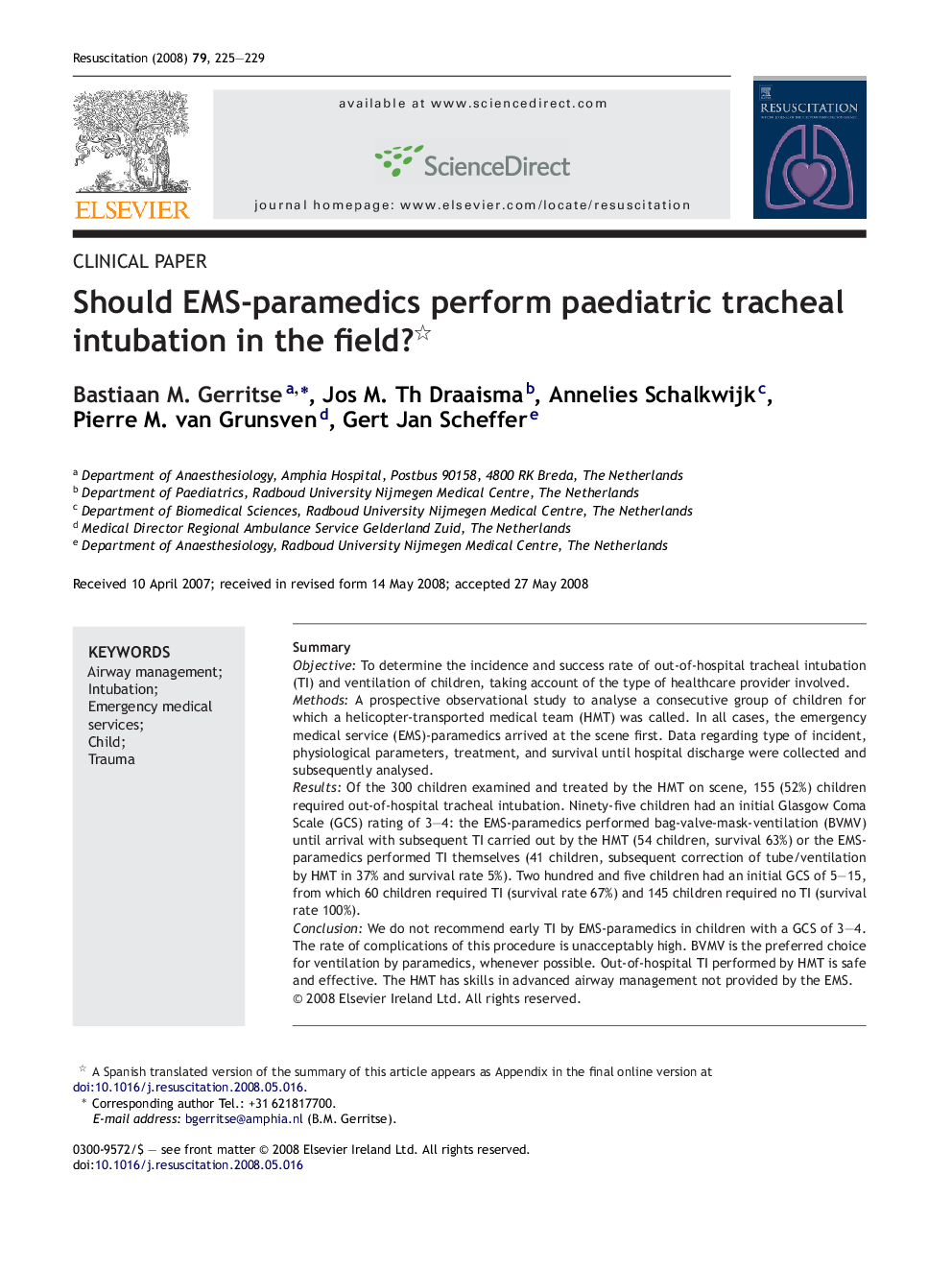| Article ID | Journal | Published Year | Pages | File Type |
|---|---|---|---|---|
| 3011299 | Resuscitation | 2008 | 5 Pages |
SummaryObjectiveTo determine the incidence and success rate of out-of-hospital tracheal intubation (TI) and ventilation of children, taking account of the type of healthcare provider involved.MethodsA prospective observational study to analyse a consecutive group of children for which a helicopter-transported medical team (HMT) was called. In all cases, the emergency medical service (EMS)-paramedics arrived at the scene first. Data regarding type of incident, physiological parameters, treatment, and survival until hospital discharge were collected and subsequently analysed.ResultsOf the 300 children examined and treated by the HMT on scene, 155 (52%) children required out-of-hospital tracheal intubation. Ninety-five children had an initial Glasgow Coma Scale (GCS) rating of 3–4: the EMS-paramedics performed bag-valve-mask-ventilation (BVMV) until arrival with subsequent TI carried out by the HMT (54 children, survival 63%) or the EMS-paramedics performed TI themselves (41 children, subsequent correction of tube/ventilation by HMT in 37% and survival rate 5%). Two hundred and five children had an initial GCS of 5–15, from which 60 children required TI (survival rate 67%) and 145 children required no TI (survival rate 100%).ConclusionWe do not recommend early TI by EMS-paramedics in children with a GCS of 3–4. The rate of complications of this procedure is unacceptably high. BVMV is the preferred choice for ventilation by paramedics, whenever possible. Out-of-hospital TI performed by HMT is safe and effective. The HMT has skills in advanced airway management not provided by the EMS.
